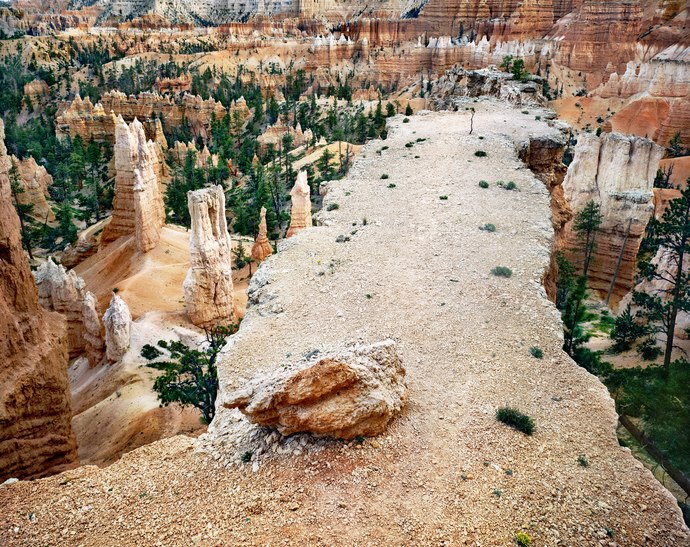Bryce Canyon is renowned for its colorful, awe-inspiring formations. Their creation began with ancient floods periodically depositing massive amounts of fine-grained sediment over millions of years. Under the weight of its layers, the sediment lithified into rock. The earth's mantle moved and uplifted much of the intermountain west to high plateaus before eroding this part of southwestern Utah to reveal an otherworldly dreamscape.
The canyon was, and continues to be, carved by ice forming in cracks and forcing rocks to split apart. Ice wedging is continuously sculpting this fragile topography. These limestone columns break, first into walls, then windows, and finally into rock spires before disintegrating altogether. It is one of the few places I've visited where I have observed the evolution of this landform over time. For instance, reaching the capstone ledge on which I made this photograph is no longer possible as the path has completely eroded.
This ledge and the tops of these "hoodoos" surrounding it are capped with white dolomite, which is harder and more rigid than the underlying red limestone. Because it fractures and erodes more slowly, it shields the layers below to help maintain their height and structure. In fact, like a tabletop, the caprock that I stood on to make this image overhangs the 200-foot-tall column that supports it and appears to levitate above the valley floor.
- James Baker

